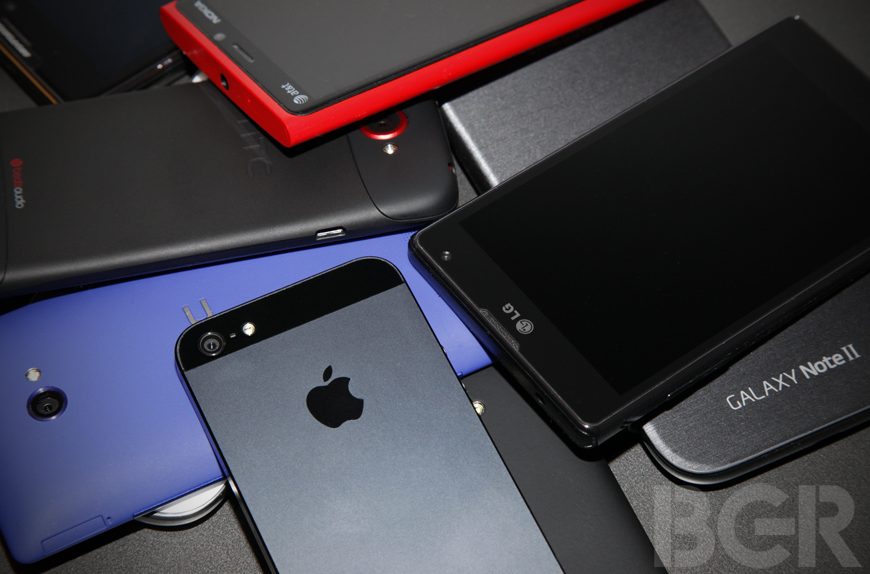How do you put your company in the best possible position to grow when you’ve seemingly squeezed customers as much as they can possibly be squeezed? Squeeze them some more. As smartphone sales begin to peak and service revenue growth slows among top U.S. carriers, these giants have no choice but to look elsewhere for growth. In some cases, they’ll turn to fees. AT&T, for example, recently found a way to milk subscribers for an extra $500 million each year by adding a $0.61 “administrative fee” to every bill. As we have previously noted, consumers should expect to see more tiny fees pile up in the coming months and years. Now, carriers have found some new tricks to bolster revenue growth by promoting handset trade-in programs and by convincing users to upgrade their devices more frequently.
Carriers have been touting handset trade-in programs for some time. In a nutshell, these programs allow customers to trade in their working devices for a credit toward a new device. These credits are always less than a person would get if he or she sold the device privately, but selling used smartphones is a hassle so carriers coax consumers with a much simpler option: Give us your phone, we’ll give you a discount on your next purchase. Carriers then refurbish the handsets and sell them for a profit.
But then T-Mobile had an epiphany: Why stop there? Why not address users’ desire to upgrade to new smartphones more frequently, combine it with a handset trade-in program, add on a mandatory revenue-boosting monthly insurance fee, and spice it up with some slick marketing?
Sites like Tested have done the math, and T-Mobile’s JUMP plan can indeed be attractive to users who take advantage of it. But the beauty is that it’s just as attractive to T-Mobile as it is to subscribers for a number of reasons. Customers are locked in for another two years of monthly handset payments every time they upgrade, they’re making up-front payments for new devices more frequently, they’re trading in handsets that T-Mobile can resell for a profit, and so on.
Since T-Mobile unveiled JUMP, AT&T has introduced its own scheme to promote more frequent upgrades and Verizon will soon follow suit. The irony, of course, is that these carriers have spent a good deal of time and effort in recent years eliminating their early upgrade programs because they were costing too much money. Now, thanks to a little creativity from T-Mobile, they’ve learned new tricks that not only make it worthwhile to convince subscribers to upgrade more frequently, but provide much-needed new revenue channels that will help boost earnings.




